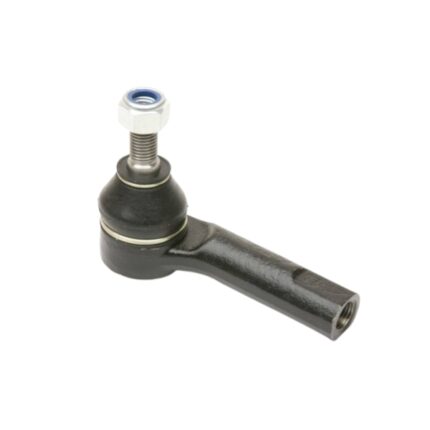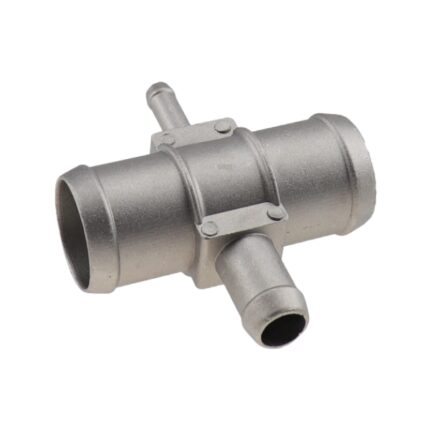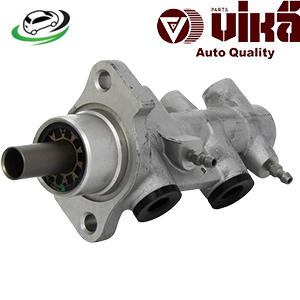Get AUDI A3 S3/ TT / VW Golf Mk4 Brake Master Cylinder 1J2614019
The brake master cylinder is a cylindrical device located in the engine compartment, typically mounted on the brake booster. It is filled with brake fluid and contains two main chambers: the primary chamber and the secondary chamber. These chambers are responsible for generating and distributing hydraulic pressure to the brake system when the driver presses the brake pedal.
The master cylinder is connected to the brake pedal via a pushrod. When the brake pedal is depressed, the pushrod pushes against a piston inside the master cylinder, which in turn compresses the brake fluid. This creates hydraulic pressure that travels through the brake lines to the brake calipers or wheel cylinders at each wheel, activating the braking mechanism.
2. How Does the Brake Master Cylinder Work?
The operation of the brake master cylinder involves several key steps:
2.1. Brake Pedal Engagement
When the driver presses the brake pedal, the force is transmitted through the pushrod to the piston within the master cylinder. The piston compresses the brake fluid in the primary chamber.
2.2. Hydraulic Pressure Generation
As the brake fluid is compressed, it creates hydraulic pressure in the master cylinder. This pressure is then directed through the brake lines to the brake calipers or wheel cylinders.
2.3. Brake Actuation
The hydraulic pressure forces the brake pads against the rotors in disc brake systems or expands the brake shoes against the drums in drum brake systems. This action slows down or stops the vehicle.
2.4. Release of Pressure
When the driver releases the brake pedal, the pressure in the brake lines decreases, allowing the brake pads or shoes to retract. The brake fluid then returns to the master cylinder, ready for the next braking event.
3. Types of Brake Master Cylinders
Brake master cylinders can be categorized into different types based on their design and functionality:
3.1. Single Circuit Master Cylinder
The single circuit master cylinder is a basic design that serves a single braking circuit. When the brake pedal is pressed, the hydraulic pressure generated affects all wheels simultaneously. This type is typically found in older vehicles and is less common in modern cars due to safety concerns.
3.2. Dual Circuit Master Cylinder
The dual circuit master cylinder is now the standard in most modern vehicles. It features two separate chambers and pistons, each controlling a different braking circuit. This design enhances safety by ensuring that if one circuit fails (for instance, due to a leak), the other circuit can still provide braking force. Dual circuit systems are usually configured in two ways: diagonal split or front-rear split.
3.3. Hydraulic Master Cylinder
The hydraulic master cylinder uses hydraulic fluid to generate braking force. This type is commonly found in vehicles equipped with hydraulic brake systems, where fluid dynamics play a crucial role in the braking process.
3.4. Electronic Brake Master Cylinder
With advancements in automotive technology, electronic brake master cylinders have emerged. These systems utilize electronic sensors and actuators to optimize braking performance and response. They can be found in vehicles equipped with advanced driver-assistance systems (ADAS) and in some electric or hybrid vehicles.
4. Symptoms of a Faulty Brake Master Cylinder
Over time, the brake master cylinder can develop issues that can affect braking performance and safety. Common symptoms of a failing brake master cylinder include:
4.1. Spongy or Soft Brake Pedal
If the brake pedal feels spongy or soft when pressed, it may indicate air in the brake lines or a failing master cylinder. This can lead to a lack of responsiveness when attempting to stop the vehicle.
4.2. Brake Warning Light
Most modern vehicles are equipped with a brake warning light on the dashboard. If this light illuminates, it could signal a problem with the brake master cylinder, such as low fluid levels or internal failure.
4.3. Leaking Brake Fluid
Visible leaks around the master cylinder, brake lines, or brake components can indicate a problem. Brake fluid leaks can lead to decreased braking effectiveness and pose a safety hazard.
4.4. Increased Stopping Distance
If the vehicle takes longer to stop than usual, it may suggest that the master cylinder is not generating adequate hydraulic pressure. This can result in diminished braking performance.
4.5. Brake Fluid Contamination
Contaminated brake fluid can lead to corrosion and wear within the master cylinder. If the brake fluid appears dark or contains debris, it is crucial to address this issue promptly.
5. Causes of Brake Master Cylinder Failure
Several factors can contribute to the failure of a brake master cylinder:
5.1. Wear and Tear
Over time, the internal components of the master cylinder, including the piston seals, can wear out due to friction and exposure to heat. This wear can lead to leaks and reduced braking efficiency.
5.2. Contaminated Brake Fluid
Brake fluid can absorb moisture and become contaminated with dirt, debris, and metal particles over time. Contaminated fluid can corrode internal components of the master cylinder, leading to failure.
5.3. Overheating
Excessive heat generated during braking can cause the brake fluid to boil, leading to vapor formation in the brake lines. This vapor can compress, resulting in a spongy brake pedal and reduced braking effectiveness.
5.4. Incorrect Installation
Improper installation of the master cylinder can lead to alignment issues, causing undue stress on the internal components. This can result in premature failure of the master cylinder.
5.5. Low Brake Fluid Levels
Running the brake system with low fluid levels can cause the master cylinder to draw in air, leading to brake fade and potential failure. It’s essential to regularly check and maintain proper fluid levels.
6. Importance of Brake Master Cylinder Maintenance
Proper maintenance of the brake master cylinder is essential for ensuring the overall safety and performance of the vehicle’s braking system. Here are some key maintenance tips:
6.1. Regular Fluid Checks
Periodically check the brake fluid level in the master cylinder reservoir. Low fluid levels can indicate leaks or other issues within the brake system that require immediate attention.
6.2. Brake Fluid Replacement
Brake fluid should be replaced at recommended intervals to prevent contamination and ensure optimal performance. Most manufacturers recommend changing the brake fluid every 2 to 3 years, depending on the vehicle and driving conditions.
6.3. Inspect for Leaks
Regularly inspect the master cylinder and surrounding components for signs of leaks. If brake fluid is found around the master cylinder or brake lines, it is crucial to address the issue promptly to prevent further damage.
6.4. Check for Brake Warning Lights
Pay attention to the brake warning light on the dashboard. If it illuminates, investigate the cause and address any potential issues with the master cylinder or braking system.
6.5. Professional Inspections
Schedule regular brake system inspections with a qualified mechanic. They can assess the condition of the master cylinder, brake lines, and other components to ensure everything is functioning correctly.
7. Benefits of a Properly Functioning Brake Master Cylinder
7.1. Safe Braking Performance
A well-functioning brake master cylinder is essential for safe braking performance. It ensures that the driver can stop the vehicle quickly and efficiently, reducing the risk of accidents.
7.2. Consistent Brake Response
A properly maintained master cylinder provides consistent brake response, allowing drivers to have confidence in their vehicle’s braking capabilities. This is particularly important in emergency situations.
7.3. Extended Brake Component Life
Regular maintenance of the master cylinder can help extend the life of other brake components, including brake pads, rotors, and calipers. By ensuring proper hydraulic pressure, these components experience less wear.
7.4. Improved Vehicle Control
A responsive braking system contributes to overall vehicle control, making it easier for drivers to navigate various driving conditions. This enhances driving comfort and safety.
7.5. Reduced Maintenance Costs
By addressing issues with the brake master cylinder early and performing regular maintenance, vehicle owners can avoid costly repairs and replacements of the entire braking system.
8. Conclusion
The brake master cylinder is a vital component of a vehicle’s braking system, responsible for converting the force applied to the brake pedal into hydraulic pressure. Understanding its functions, types, and maintenance requirements is crucial for ensuring optimal braking performance and safety. Regular inspections and maintenance can help prevent issues with the master cylinder, allowing for safe and efficient vehicle operation. Whether driving a daily commuter or a high-performance vehicle, proper attention to the brake master cylinder can make a significant difference in your driving experience.
Follow us on Facebook for more parts.




Reviews
Clear filtersThere are no reviews yet.